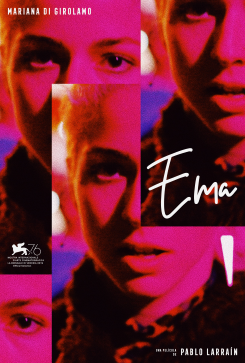by Abe Fried-Tanzer
 Chilean director Pablo Larraín was last at the Sundance Film Festival with frequent collaborator Gael García Bernal in 2013 for the Oscar-nominated No. Since then, he’s earned two additional bids from the Golden Globes in the foreign language category for The Club and Neruda. He even made his first film in English: Jackie. Now, Larraín is back with another Bernal film, showing in the Spotlight section after its premiere at the Venice International Film Festival.
Chilean director Pablo Larraín was last at the Sundance Film Festival with frequent collaborator Gael García Bernal in 2013 for the Oscar-nominated No. Since then, he’s earned two additional bids from the Golden Globes in the foreign language category for The Club and Neruda. He even made his first film in English: Jackie. Now, Larraín is back with another Bernal film, showing in the Spotlight section after its premiere at the Venice International Film Festival.
Though Bernal plays a substantial role, this film is all about actress Mariana Di Girolamo. She stars as the title character, who is married to Bernal’s choreographer character...
The Chilean couple is having a difficult time coping with the fact that they had to give their adopted son Polo back to Child Protective Services after a series of disturbing incidents. Neither has fully come to terms with the loss, and it permeates their everyday lives since all those in their small Chilean town know what happened. Ema, a dance teacher, turns to her art for comfort, performing in her husband’s company and letting off steam by moving to reggaeton music, which irritates Gastón to no end. As they blame each other for their failure as parents, Ema begins to explore new relationships with a variety of people.
Ema is an unapologetically individualistic spirit, not content to be told that what she likes is improper or unacceptable. She defines the reason behind her career as a way to rebel against her conservative mother, expressing herself freely with her body. This film is appropriately rhythmic, featuring a number of quick moments in which Ema is seen dancing either alone or with a group, not denoted as either real or imagined. The editing here makes the entire film a musical experience, pausing only briefly when certain dialogue is necessary with no beat in the background. The buoyant energy of No, the creative approach to showcasing internal thoughts from Neruda, and the gorgeous visuals of Jackie can all be traced as influences for this marvelous aural and visual experience. Like Larraín’s previous films, this one is also much smarter than it lets on, offering not just entertainment but satisfying substance.
related: Nathaniel's take at TIFF